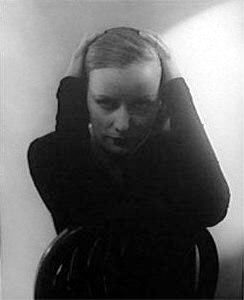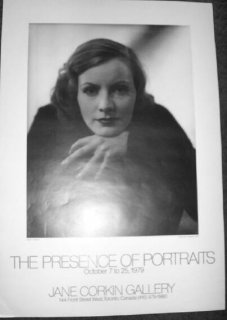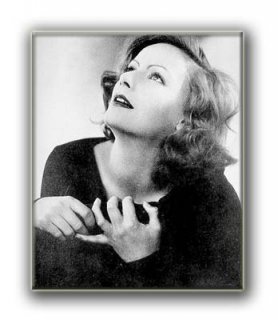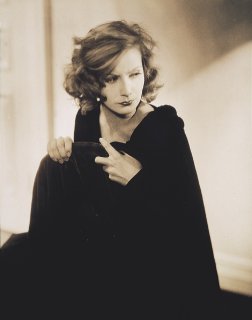SomethingElse
Press escape to continue.
- Joined
- Mar 22, 2007
- Messages
- 5,444
- Reaction score
- 0
Edward Steichen was already a famous painter and photographer on both sides of the Atlantic (possibly the most famous photographer), when, in early 1923, he was offered possibly one of the most prestigious and certainly the most lucrative position in photography’s commercial domain – that of chief photographer for Condé Nast’s influential and highly-regarded magazines, Vogue and Vanity Fair. Though it meant a break with the high-minded art-for-art’s-sake ethos espoused by his mentor Alfred Stieglitz (a break viewed as treachery by Stieglitz and his friends), he leapt at the chance, having come to the conclusion that photography’s natural -- and therefore true -- function was utilitarian: a thoroughly modern means of human communication. For the next fifteen years, Steichen would take full advantage of the resources and prestige conferred by the Condé Nast empire to produce an oeuvre of unequalled brilliance, putting his exceptional talents and prodigious energies to work dramatizing and glamorizing contemporary culture and its achievers -- in politics, literature, journalism, dance, theatre, opera, and above all, the world of high fashion.
No other fashion photographer could rival Steichen for the range he covered: Chanel, Lanvin, Lelong, Alix, Gres, Piguet, Pacquin, Schiaparelli, and a host of other couturiers and couturieres saw their creations depicted creatively and convincingly by Steichen on the pages of Vogue. No other portrait photographer could rival Steichen for the number of bold, engaging studies he made of artists and statesmen for Vanity Fair. Who else could boast of having photographed so many of the world’s best filmmakers, actors, actresses, painters, athletes, playwrights, producers, poets, journalists, dancers, singers, writers?
The fashion plates Steichen produced make for a full archive of modernist fashion of the inter-war years. In the 1920s and 30s, Steichen created a new style of fashion photography, which had previously been a fussy, fuzzy pictorialist affair, out of step with the modernist ethos championed by the couturiers themselves, busily absorbing avant-garde currents of the time. Steichen’s first-hand exposure to progressive art on both sides of the Atlantic, and his own naturally eclectic bent, made him the ideal translator of couture into photography. His crisp, detailed, high-key style revolutionized fashion photography, and is a strong wind felt in the field to this day -- George Hoyningen-Huene, Horst P. Horst, Richard Avedon, Robert Mapplethorpe and Bruce Weber are only his most illustrious descendants.
The full list of Steichen’s portraits is astounding for its range. Among the more than one thousand subjects were the filmmakers Cecil B. De Mille, Ernst Lubitsch, Irving Thalberg, Josef von Sternberg and Walt Disney; among the actors, Gary Cooper, Maurice Chevalier, Harold Lloyd, W.C. Fields and Rudolph Valentino; among the actresses, Shirley Temple, Gloria Swanson, Claudette Colbert, Marlene Dietrich and Fay Wray; among the painters, Henri Matisse and Georges Rouault; among the writers, Thomas Mann, George Bernard Shaw, W.B. Yeats, e.e. cummings, Luigi Pirandello and Collette; among the dancers, Martha Graham, Ruth St. Denis and Fred Astaire; among the musicians, Igor Stravinsky, Leopold Schakowsky, Vladimir Horowitz and George Gershwin; among the statesmen Winston Churchill, Franklin Delano Roosevelt and Herbert Hoover; among the athletes, Jack Dempsey and Suzanne Lenglen; among the journalists Clare Luce, Walter Winchell and Walter Lippmann. Often the portraits of women artists and actresses double as fashion statements; Collette in Chanel; Hepburn in Schiaparelli, Swanson in Chanel.
The Steichen archive at Condé Nast contains more than two thousand original vintage prints. A few of the images are well-known and indeed feature as iconic images in various histories of photography. Never before, however, have more than a handful of these prints been exhibited or published. The 1920s and 1930s represent the high point in Edward Steichen’s photographic career, and the work he did for Condé Nast’s influential magazines will stand forever among the most striking creations of twentieth-century photography.






fep-paris.org
No other fashion photographer could rival Steichen for the range he covered: Chanel, Lanvin, Lelong, Alix, Gres, Piguet, Pacquin, Schiaparelli, and a host of other couturiers and couturieres saw their creations depicted creatively and convincingly by Steichen on the pages of Vogue. No other portrait photographer could rival Steichen for the number of bold, engaging studies he made of artists and statesmen for Vanity Fair. Who else could boast of having photographed so many of the world’s best filmmakers, actors, actresses, painters, athletes, playwrights, producers, poets, journalists, dancers, singers, writers?
The fashion plates Steichen produced make for a full archive of modernist fashion of the inter-war years. In the 1920s and 30s, Steichen created a new style of fashion photography, which had previously been a fussy, fuzzy pictorialist affair, out of step with the modernist ethos championed by the couturiers themselves, busily absorbing avant-garde currents of the time. Steichen’s first-hand exposure to progressive art on both sides of the Atlantic, and his own naturally eclectic bent, made him the ideal translator of couture into photography. His crisp, detailed, high-key style revolutionized fashion photography, and is a strong wind felt in the field to this day -- George Hoyningen-Huene, Horst P. Horst, Richard Avedon, Robert Mapplethorpe and Bruce Weber are only his most illustrious descendants.
The full list of Steichen’s portraits is astounding for its range. Among the more than one thousand subjects were the filmmakers Cecil B. De Mille, Ernst Lubitsch, Irving Thalberg, Josef von Sternberg and Walt Disney; among the actors, Gary Cooper, Maurice Chevalier, Harold Lloyd, W.C. Fields and Rudolph Valentino; among the actresses, Shirley Temple, Gloria Swanson, Claudette Colbert, Marlene Dietrich and Fay Wray; among the painters, Henri Matisse and Georges Rouault; among the writers, Thomas Mann, George Bernard Shaw, W.B. Yeats, e.e. cummings, Luigi Pirandello and Collette; among the dancers, Martha Graham, Ruth St. Denis and Fred Astaire; among the musicians, Igor Stravinsky, Leopold Schakowsky, Vladimir Horowitz and George Gershwin; among the statesmen Winston Churchill, Franklin Delano Roosevelt and Herbert Hoover; among the athletes, Jack Dempsey and Suzanne Lenglen; among the journalists Clare Luce, Walter Winchell and Walter Lippmann. Often the portraits of women artists and actresses double as fashion statements; Collette in Chanel; Hepburn in Schiaparelli, Swanson in Chanel.
The Steichen archive at Condé Nast contains more than two thousand original vintage prints. A few of the images are well-known and indeed feature as iconic images in various histories of photography. Never before, however, have more than a handful of these prints been exhibited or published. The 1920s and 1930s represent the high point in Edward Steichen’s photographic career, and the work he did for Condé Nast’s influential magazines will stand forever among the most striking creations of twentieth-century photography.






fep-paris.org



































